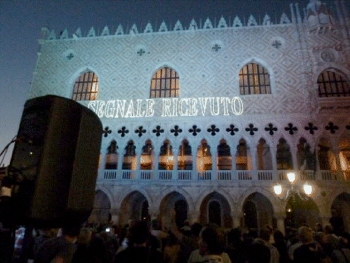A group of Italian and Swedish researchers claim to have found a way to dramatically boost the information-carrying capacity of radio waves by employing a technique called "orbital angular momentum." Essentially the technique consists in forcing radio waves to twist about their axis as they travel, tracing out the shape of fusilli pasta, and varying this twist could allow a number of channels to be broadcast in the same frequency band.
The researchers demonstrated their theory by transmitting two twisted radio waves in the 2.4 GHz band, over a distance of 442 meters from San Giorgio island to Palazzo Ducale in St. Mark's square on the mainland of Venice, where they were able to pick up the two separate channels.
Apparently it shouldn't be too hard or expensive to add more twisted waves and increase the number of signals that can be sent simultaneously. Dr Fabrizio Tamburini, one of the researchers, explained to PhysOrg:
"Each of these twisted beams can be independently generated, propagated and detected even in the very same frequency band, behaving as independent communication channels [...] Within reasonable economic boundaries, one can think about using five orbital angular momentum states, from -5 (counter-clockwise) up to 5 (clockwise), including untwisted waves. In this instance, we can have 11 channels in one frequency band. It is possible to use multiplexing, like in digital TV, on each of these to implement even more channels on the same states."
According to Tamburini's calculations one could obtain 55 channels in the same frequency band. The findings, published in the New Journal of Physics yesterday, could pave the way for entirely new radio communication paradigms that might offer a solution to band congestion for radio, television, and Wi-Fi transmissions.
